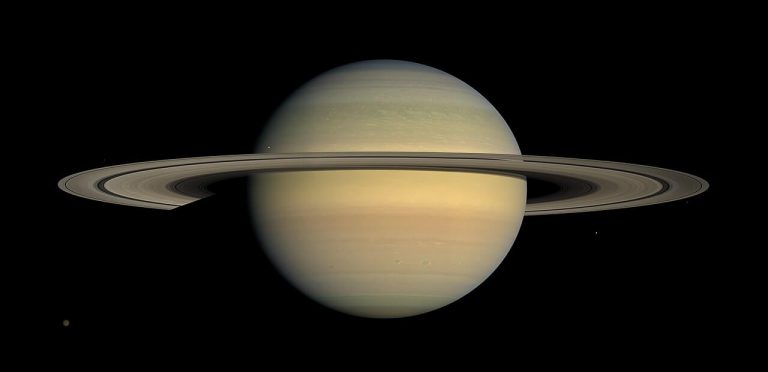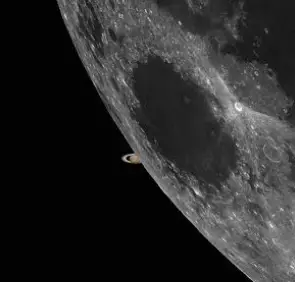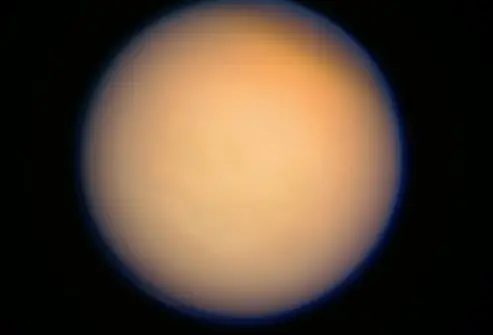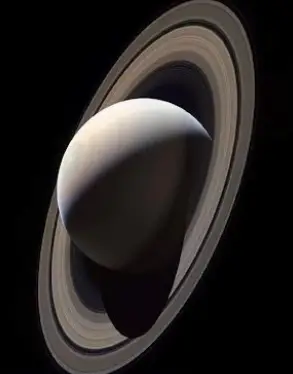
INTERESTING FACTS ABOUT SATURN !!!
This is the list of planets in order of their distance from the Sun: Mercury, Venus, Earth, Mars, Jupiter, Saturn, Uranus, and Neptune.
Saturn is the sixth planet from the Sun in the Solar System.
Saturn is the second largest planet in our Solar System.
A day on Saturn lasts just 10 hours and 40 minutes, because it spins on its axis very fast. A day on Earth is 24 hours.
Saturn orbits around the Sun once every 29.4 Earth years, or once every 10,755.7 Earth days. A year on Earth is 365.256 days.
Saturn is about 1.4 billion km (886 million miles) from the Sun, or about 9.5 astronomical units (AU). One AU represents the average distance between Earth and the Sun.
It travels at an average speed of 21,637 miles per hour.
Saturn rotates from West to East, similar to Earth.
The planet has an average temperature of -288° F, or -178° C.
Saturn’s magnetic field is more than 575 times more powerful than Earth’s magnetic field.
Saturn, like Jupiter, are made up primarily of hydrogen and helium gas, and they both bulge in the middle. Although Saturn is more dense than Jupiter.

The planets Neptune, Uranus, Saturn, and Jupiter are known as the four gas giants in our Solar System. They are called the gas giants because of their composition.
Jupiter, Saturn, Uranus, and Neptune are also known as the outer planets, because they are found in the outer part of the Solar System, beyond the orbits of Mars and the asteroid belt.
The inner planets are the four closest to the Sun: Mercury, Venus, Earth, and Mars.
Saturn is bigger than Earth and is made out of more materials, but they are not so tightly packed together. The materials are spread out more, which means it has a lower density. For example, if you had a huge bucket of water and dropped all the planets into it, Saturn would float, while the rest would sink to the bottom.
Saturn is nearly 10 times wider than Earth. Scientists estimate that up to 750 Earths could fit inside of Saturn.
Saturn is the flattest planet in our Solar System.
Saturn has a large family of 82 moons. 53 moons are confirmed and named, while the other 29 are awaiting confirmation of discovery and official naming.
One of Saturn’s moons, Titan, is the second largest moon in the Solar System. Its surface is hidden away under thick orange clouds.

Titan is 80% bigger than Earth’s moon.
Most of Saturn’s moons are just tiny, icy worlds.
Saturn’s moons have their own gravity. As they travel around the planet on their orbits, the moons use this force to tug at Saturn’s rings. This pulling changes the way the rings are set out and creates the gaps in between them.
Saturn is best known for its colorful rings. Its famous rings are made of chunks of ice and rock, some are as small as sand grains, and some are as massive as mountains. They are what’s left of icy comets, asteroids and moons, that were sucked in by Saturn’s gravity, and smashed into pieces as they crashed into each other. The icy chunks and grains are like mirrors that reflect the light from the Sun. This is why the rings are so bright and dazzling.
Saturn is nicknamed the “jewel of the Solar System,” due to its dazzling rings. It also boasts some of the most fascinating landscapes in our Solar System.

Saturn’s rings were first observed in 1610 by the astronomer Galileo Galilei.
Galileo originally called Saturn’s rings “ears”.
Saturn has been observed in the night sky since ancient times, because it is easily visible to the naked eye.
Saturn was named after the Roman god of agriculture.
The symbol for Saturn is an ancient scythe or a sickle.
The day Saturday was named after the planet.
Before we had telescopes, Saturn was the most distant planet that astronomers knew about.
Storm winds race around the atmosphere of the planet at 800kmp/h.
A storm can last for months or even years.
Saturn has only been visited four times by robotic spacecrafts.
The Cassini-Huygens, was the first spacecraft to orbit Saturn in 2005. It’s probe entered the atmosphere of Titan, Saturn’s largest moon, and sent back the first images of this large moon.
As the Cassini spacecraft orbited the planet, it sent back incredible pictures and data. It made new discoveries, like the fact that there’s a mysterious hexagon spinning above the planet’s North Pole.
All of the planets in our Solar System orbit around the Sun.
Moon’s orbit their planets and planets orbit the Sun.
The gravity of the Sun keeps all the planets in their orbit, just like the planets gravity keeps their moons in their orbit.
An orbit is a journey/path that an object takes in space. For example, stars, planets, moons, asteroids or spacecrafts.
Gravity is the invisible pulling force that works in space. Earth’s gravity is what keeps us on the ground.
Pluto was once considered the 9th planet of our Solar System. Then in 2006, it was downgraded from a planet to a dwarf planet, by the International Astronomical Union (IAU), because it could not meet the three criteria the IAU uses to define a full sized planet.
The three criteria that are required to be called a planet by the IAU are firstly, it has to orbit the Sun, secondly, its shape should resemble a ball like figure, and lastly, it must be able to clear the area around its orbit, by pushing other objects out of its way with its impressive size and gravity.
The reason why Pluto was downgraded from a planet to a dwarf planet is because it could not clear the area around its orbit, by pushing other objects out of its way with its impressive size and gravity.
The downgrading of Pluto outraged many in the scientific community.





